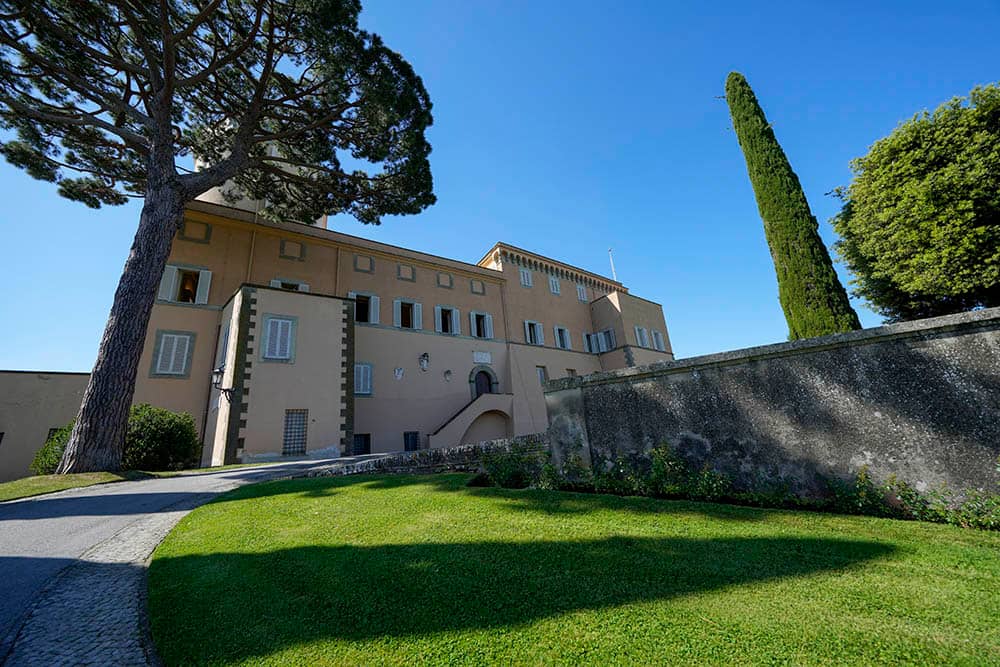When Alessandro Gisotti, the interim head of the Vatican’s press office, greeted reporters on January 2, he asked them for “patience” admitting he is likely to make some initial mistakes in a job with a steep learning curve.
The longtime Vatican Radio employee, who had most recently been running the social media for the Vatican’s Dicastery for Communication, may seem an odd choice to replace the former Time magazine correspondent and Fox News personality Greg Burke, who resigned on Dec. 31.
The head of the press office has traditionally been known as the “papal spokesperson,” and since Spaniard Joaquín Navarro-Valls was appointed to the role in 1984, has been the public face of the Vatican as an institution.
Navarro-Valls, who served under both St. John Paul II and Benedict XVI until his resignation in 2006, held sway during perhaps the greatest change in media since the invention of television.
Coming into office when film still had to be flown to network headquarters each day, Navarro-Valls ran the press office as the world entered the 24-hour cable news cycle, and later the internet age.
RELATED: Vatican shakeup shows why journalists shouldn’t be corporate mouthpieces
His successor, Jesuit Father Federico Lombardi, never fully embraced this role – insisting the pope was his own spokesperson. Lombardi even refused to move his office from Vatican Radio, where he had served for decades.
Yet a series of Vatican missteps – including the blowup of the partial rehabilitation of a Holocaust-denying traditionalist bishop and the Vatileaks scandal involving the pope’s butler – made many in the Vatican push for a high-profile person with a background in secular journalism to take over the role.
When Burke was appointed Lombardi’s deputy in 2015 (he took over the top spot when the Jesuit retired the next year), he was considered the best of both worlds. He had spent years covering Italy and the Vatican for Time and Fox, and since 2012, was the “senior communications advisor” for the Vatican’s Secretariat of State. (No one was quite sure what this position entailed. When asked, Burke usually responded, “Putting out fires.”)
But Burke was not able to put out the fire caused by Pope Francis’s remarks accusing survivors of a Chilean abusive priest of “calumny” when they said a bishop had covered up for their molester. He also could do little to dampen the flames after Archbishop Carlo Maria Viganò accused Francis of “rehabilitating” disgraced ex-Cardinal Theodore McCarrick even though Benedict had placed restrictions on him after he was accused of sexual misconduct with seminarians.
Like Lombardi before him, Burke often took the blame for not saying enough or saying the wrong thing as a crisis engulfed the Vatican.
This laying the blame at the press office was usually unfair – the press officer answered to the Secretary of State, and for decades their go to response to scandal has been “no comment.” Press officers around the world will tell you how important it is for them to have access to the head honcho and to be part of the decision-making process. This has not been the case at the Vatican since Navarro-Valls’s relationship with John Paul II.
Both Lombardi and Burke also had to deal with the unique problems posed by Francis, who loves to speak off-the-cuff on controversial subjects, and often does things without even telling his closest advisors, let alone the Vatican press office.
Which is why Gisotti’s appointment indicates a change in policy, and an effort to take the pressure of being “papal spokesman” from the Press Office.
The Italian is no slouch. He has written three books, including one on Barack Obama and religion, and has made several appearances on Italian TV. He speaks English, and his colleagues (I worked with him for over a decade at Vatican Radio) can attest to his intelligence and good character.
He is also an institutional man – a protégé of Lombardi – who is unlikely to push back against the boundaries put on the position which reportedly have caused tensions in the press office in recent months.
These constrictions aren’t only coming from the Secretariat of State, but also the Dicastery for Communication, established in 2015 to consolidate the Vatican’s various media operations.
Historically, these operations – including Vatican Radio, the newspaper L’Osservatore Romano, and the book publishing office – had roles very distinct from the press office. They saw themselves as analogous to PBS, as opposed to the White House press room. They operated largely independent of daily interference from the Vatican curia, and except for clearly indicated exceptions, their broadcasts and articles were not “official” statements of the Holy See.
The new dicastery, on the other hand, is fully integrated into the Vatican curia, and seeks a more official role in transmitting the viewpoints of the pope and Vatican offices.
It means the dicastery’s head, layman Paolo Ruffini, and his newly appointed editorial director, La Stampa journalist Andrea Tornielli, are also in a position to speak for the Vatican in an official capacity. (Some have wryly pointed out Tornielli, a friend of the pope, had already been acting as a papal spokesman from his position at the Turin-based newspaper since Francis was elected.)
Concerningly, Gisotti, Ruffini, and Tornielli are all Italian, and will be more influenced by the top stories on state broadcaster RAI and the headlines in Corriere della Sera, as opposed to the BBC and New York Times.
And with two papal trips in the next month – Jan. 23-27 to Panama and February 3-5 to the United Arab Emirates – there will be little time for the new media team to prepare, let alone figure out their individual roles, ahead of the all-important abuse summit bringing together bishops from around the world to Rome on Feb. 21-24.
















